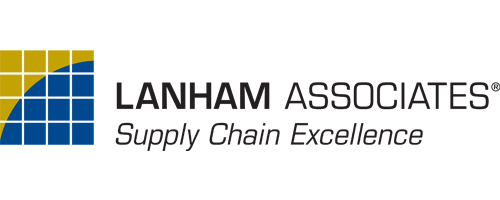It's no secret that the COVID-19 pandemic has brought change to supply chains. Supply chain disruption has reigned for over a year now, with impacts including supply and demand changes, delivery disruptions and cancellations, and overall volatility.
Some of the most significant changes have been in behavior; people are now working remotely and minimizing time spent in public spaces. This trend has brought on a major shift in buying behavior for both B2B and B2C alike: eCommerce's rapid growth. In fact, Forrester projects that B2B eCommerce transactions in the US will reach $1.8 trillion by 2023, accounting for 17% of all B2B sales in the US. So while the end of the pandemic is in sight, this buying pattern is here to stay.
But selling via eCommerce channels is more involved than just creating a website. There are a good number of solid eCommerce tools out there that integrate with your Business Central or NAV ERP to help you get started. However, eCommerce plays by a faster set of rules than your traditional sales routes. You need to have your inventory completely under control to keep up with demand and sustain your eCommerce model.
Inventory Management Challenges in eCommerce
eCommerce brings special challenges like high customer expectations, evolving customer demand, expensive losses from stockouts, and more. Here we'll go through some of the unique inventory challenges that come with eCommerce and how you can manage them.
Stockouts become more costly
Inventory availability is critical to eCommerce success. At first glance, the concept of inventory stockouts costing more through eCommerce seems ridiculous. But as soon as an item comes up "out of stock" to an eCommerce shopper, you risk not only the sale for that item but also for any other things they may have in their "cart." If they can get all the items they need from a different eCommerce seller, they will quickly take their business elsewhere – maybe even permanently.
High customer expectations
The shopping habits of B2C shoppers have bled over into B2B shopping habits. Price is no longer the only priority for customers; convenience and speed are also imperative. As mentioned above, stockouts can lead to lost sales (both current and future), but failing to meet customer expectations can also lead to poor reviews. A negative customer review stemming from one bad experience will potentially deter new customers.
Forecasting customer demand
eCommerce requires sellers to be agile enough to respond to demand changes quickly. Merely reacting to market changes isn't enough, as you may miss out on a demand surge due to insufficient stock. It's imperative to be proactive and anticipate fluctuations. Knowing where your products are in their product lifecycle is critical to identifying the demand type for each item and adjusting your replenishment and stocking accordingly.

Figure 1: Graph showing how demand changes as an item moves through the product lifecycle.
Seasonality, trends, and promotions
Seasonality, demand trends, and promotional activities all affect demand. More than regular base demand and forecast, these all impact inventory management. Seasonal items are typically reasonably predictable; you need to ensure that you're prepared for the demand changes that affect seasonal items. Demand trends are more irregular than seasonality and include peaks or troughs to look out for in item demand. Promotions that you hold will also impact the overall demand for your product, so you need to be prepared for changes. For eCommerce, you also need to be vigilant if you offer price-matching as a promotion.
Supply chain disruptions
The most difficult impacts to foresee are from supply chain disruptions. There are plenty of supply chain disruptions – ranging from holidays to black swan events to natural disasters to transportation failures – and, unfortunately, it's not a matter of if but when you will be hit by one. Disruptions lead to challenges like supply and demand changes, delivery disruptions or cancellations, and price changes and fluctuations. Companies selling via eCommerce especially need to be decisive and proactive in managing and minimizing the impacts from supply chain disruptions.
Scalability
eCommerce transactions for both B2B and B2C businesses will only continue to grow for the foreseeable future – so your operations will have to scale to keep up! If you are barely managing to keep up with your current demand (i.e., you are seeing frequent stockouts, constantly having to place small orders to keep up, or are surprised by demand trends), you need to adjust your strategy to account for growth.
Inventory Optimization: The Next Step in Inventory Management
Business Central and NAV offer inventory management capabilities, including storing data on all inventory items, grouping items into hierarchical structures and assigning category attributes, linking replacement articles to offer alternatives to sold-out products, and even managing non-stocked items. For some organizations, this is an adequate amount of inventory control – but for companies looking to grow (especially those in the fast-paced and dynamic world of eCommerce), a more robust inventory solution is a necessity.
Enter inventory optimization. Inventory optimization focuses on achieving high levels of stock availability while using the lowest possible inventory investment. Essentially, maximizing your fulfillment rates while minimizing capital spent. Inventory optimization is achieved with an add-on solution to your ERP, like EazyStock.
EazyStock continually analyzes your inventory and makes recommendations according to your parameters. There is a wealth of functionality within EazyStock, but the software has three core functions: forecasting, classification, and reordering.
Statistical Demand Forecasting
EazyStock forecasts each inventory item's demand using advanced statistical algorithms that account for the item's position in its product life cycle (since demand is different at different stages). The software then applies a different algorithm to each case to forecast as accurately as possible. Forecasts are then adjusted to account for things like seasonality, demand trends, and promotions. With an inventory optimization tool, you're able to manage changing or seasonal customer demand easily.
Inventory Classification
Business Central and NAV offer limited grouping capabilities for inventory. Inventory optimization software uses ABC analysis to classify items based on demand types, demand volatility, and profitability. With stock categorized into EazyStock's inventory matrix, your service levels are set, and the system automatically adjusts stock levels to achieve your service level targets. For eCommerce companies, this means no more stockouts; you have what you need on your shelves to fulfill your orders.
Automated Reordering
To keep your inventory on track, EazyStock inventory optimization software automates reordering for each SKU, taking service levels, demand forecasts and volatility, current inventory levels, supplier lead time, and other supplier constraints into account for each item. EazyStock then generates a daily list of orders that gets imported into your Business Central or NAV ERP through existing connectors, waiting for either your approval or adjustments.
Learn More About How to Optimize Your eCommerce with Inventory Optimization
EazyStock continually analyzes and dynamically adjusts at the SKU level every day, so your inventory is prepared to fulfill any orders coming in. This is invaluable for eCommerce companies, as there are more disruptions and impacts to the supply chain than ever. The need to be agile and dynamic is crucial to a successful eCommerce operation, including agile and dynamic inventory management.
To see more on how EazyStock can support eCommerce growth, register for Innovia's upcoming webinar on April 15, "Leveraging Inventory Optimization for eCommerce Success" or watch it on-demand if you are reading this later.






